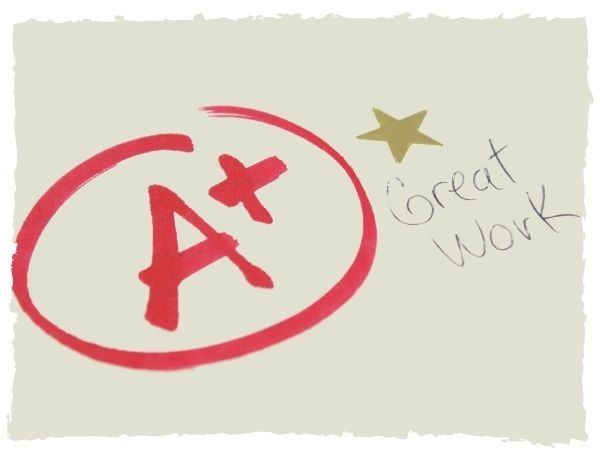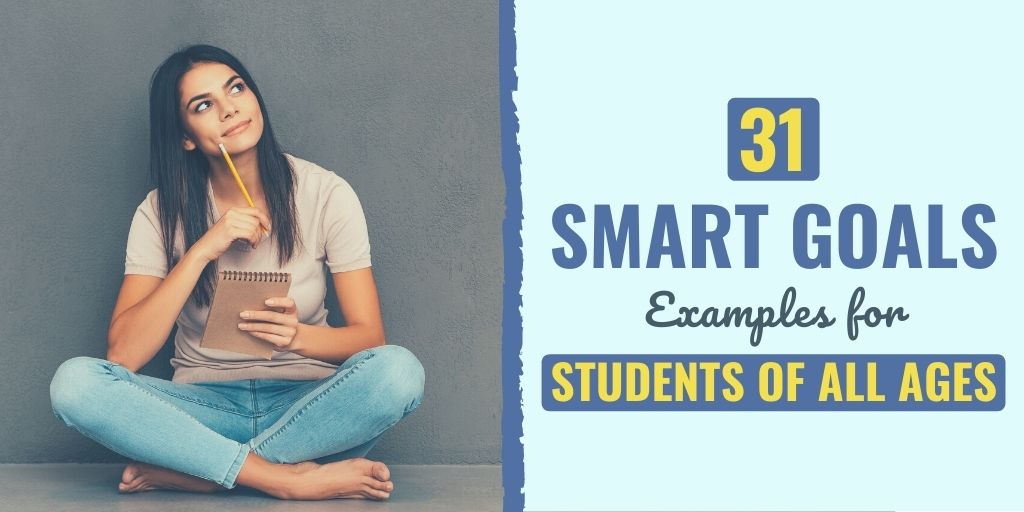There might be affiliate links on this page, which means we get a small commission of anything you buy. As an Amazon Associate we earn from qualifying purchases. Please do your own research before making any online purchase.
A new school year is underway, and students are facing unprecedented challenges as most are having to “learn how to learn” in a whole new way. Due to the spread of the COVID-19 virus, students have brought traditional classroom learning back into their own homes, giving a huge rise to the relatively new concept of online education.
But, despite learning environments taking on a new look, students are still eager to get back into a routine, learn new things, and make some marked progress in their extra-curricular activities of choice.
While students have always needed motivation and self-discipline to excel in school, this new academic climate takes that requirement to the next level. Students no longer have a teacher looking over their shoulder or instructing them to put their smart phones down and pay attention. It’s now up to all learners to be proactive in their studies and feel a sense of responsibility for their educational outcomes.
Teachers can support students in this endeavor by teaching proper goal-setting techniques so students can focus their efforts appropriately, effectively manage their time, and see the positive results of their work. And setting SMART goals isn’t just important for helping students focus and maintain their momentum during these months of virtual learning–it’s a critical skill they will use for the rest of their lives.
(If you're a teacher looking for some inspiration in creating your own SMART goals, check out this post.)
Now, if you’re the student, learning the art of setting SMART goals will help you continuously improve yourself, which will help you gain a competitive advantage over your peers once you enter the working world. And, the simple act of setting effective goals will be an integral part of your success.
According to Locke and Latham’s goal setting theory, two people with the same skills and knowledge can perform very differently on the same task if they have different performance goals because their goals ultimately determine their motivation to succeed. Whoever is more driven to succeed will probably do so.
In this article, we are going to look at the value of SMART goals and why students of all ages should know how to set SMART goals to lay the foundation for their academic success.
Then we will go over 21 specific examples of statements that students can use to improve their performance at school, in their extra-curricular activities, and in their lives in general. (And if you want a simple tool to track these goals, then check out this 13-week goal planner, backed by science and success psychology, that is designed to optimize your day and help you tackle your goals.)
Let’s start by taking a look at what SMART goals are and why they’re so valuable.
What Is a SMART Goal?
SMART goals are statements that turn your vague intentions into an actionable plan. They provide you with a strategy to achieve your vision by guiding you to set objectives that fit into the “SMART” mold.
The SMART acronym exists in a variety of forms, but each one touches on the same fundamental ideas. Here, we refer to SMART goals as being Specific, Measurable, Achievable, Relevant, and Time-Bound. Let’s look at each one of these characteristics individually.
(Check out this post on action verbs that you can use to create your SMART goals.)
Let’s take a quick look at what these goals do not look like to help further your understanding of them:
SMART goals set you in the right direction, push you to take that critical first step, and keep your goals organized so you can achieve them.
Why Is It Particularly Important for Students to Set SMART Goals?
It’s important for people in any stage of life to set goals, but because students are immersed in a learning environment, which often leads their learning to go beyond the subject at hand, this is the perfect time to practice setting SMART goals. Also, with so much being expected of students, there is a lot of material to work with (so to speak) for setting goals and maintaining order in life.
One longitudinal study looked at the relationship between goal setting and student achievement in over 1200 high school students learning Spanish. The researchers performed a correlational analysis that revealed a statistically significant relationship between the process of setting goals and students’ proficiency in Spanish.
The researchers went on to explain that setting goals gave the students a greater sense of autonomy in their learning, which lead to higher levels of motivation to succeed in their studies. (Check out our compilation of the best motivational movies for students.)
This suggests that students who set goals are more motivated to learn than those who don’t, which leads to better educational outcomes. Seeing as autonomy is an integral part of today’s learning culture, there’s no better time than now for students to become pros at setting SMART goals.
Now, let’s look at 31 examples of SMART goals that you can use if you’re a student to increase your chances of being successful in school–not only for this year, but for many years to come as well.
31 SMART Goals Examples for Students of All Ages
1. Meet Each of My Teachers
“I will meet with each of my teachers individually within the first two weeks of class to start building a rapport and gain clarity of their expectations so I will feel comfortable going to them with future questions throughout the year.”
S: This statement answers all of the questions: who, what, when, where, and why.
M: Each meeting with a teacher acts as one unit of measurement and progress can be measured at any point during that two-week time frame by counting the number of meetings left to do.
A: The goal setter has all of the tools they need to achieve this goal.
R: This goal is relevant to the student’s success in class.
T: The goal setter has set a two-week deadline for achieving this goal.
2. Complete Assignments One Day Before the Deadline
“I will complete all of my assignments this year at least one day before they’re due to avoid rushing through any work. To do this, I will list all of my assignments in order of their due date and work through them accordingly. I will spend 30 minutes every Sunday night determining which projects need attention during the week ahead.”
S: The specific goal set is to complete all assignments one day before they’re due.
M: The goal setter will know his progress with the passing of each assignment’s deadline.
A: By being organized with a list of assignments and a schedule for completing them, the goal setter has made an achievable goal.
R: Finishing projects before they’re due is an appropriate way to avoid turning in work that has been hurried.
T: The deadline for this goal is threefold: 1) one day prior to each assignment’s due date 2) every Sunday night 3) the end of the school year.

3. Raise my Hand at Least Five Times Each Week
“To keep myself accountable for my learning, I will raise my hand at least five times each week in class to answer a question posed by the teacher.”
S: The clear objective is to answer at least five of the teacher’s questions in class per week.
M: Each time a question is answered, the goal setter has made progress toward meeting his goal.
A: The student will stay on top of his assigned reading, homework, etc in order to be prepared to answer the teacher’s questions.
R: It’s worth the goal setter’s time to participate in class if he wants to stay accountable for his learning.
T: The deadline for this goal is every Friday at the end of the day.
4. Improve my Grade in English
“To improve my grade in English to a B or higher, I will complete all of the grammar, punctuation, writing mechanics, and word usage modules in the writing center, scoring at least a 92% on each within the next 4 months.”
S: The unambiguous nature of this goal makes it specific.
M: Progress can be tracked as each module has been completed with a score of 92% or above.
A: As the student becomes more skilled at using proper grammar and punctuation, his English grade will improve accordingly.
R: Spending extra time completing English modules is a worthwhile way to improve an English grade.
T: The deadline for this goal is 4 months from the starting date.
5. Practice Reading for 20 Minutes Per Day
“I will demonstrate growth in my reading accuracy and fluency by the last day of school by reading 70 words per minute with 95% accuracy. I will practice reading for a minimum of 20 minutes per day.”
(Note: This SMART goal is designed for a student at the third grade level. While this may seem like a young age to write such an articulate goal, many teachers offer fill-in-the-blank worksheets to help younger students practice setting goals such as this one.)
S: This student wants to be able to read 70 words per minute with 95% accuracy.
M: Progress can be checked by doing reading tests throughout the year to look for improvement.
A: By practicing reading every day, the student will improve his reading skills.
R: It is appropriate and relevant for a child this age to learn how to read to set himself up for future success.
T: This goal’s deadline is the last day of school.

6. Practice my Lines with a Fellow Student
“By September 15th, I will have found another student who also enjoys theater with whom I can practice lines in order to audition for the school play. We will practice for three hours per week together and I will practice for four additional hours per week alone until auditions on November 5th to land a role in the school play.”
S: This student has set a specific plan to improve his chances of earning a role in the school play.
M: There are two measurable parts to this goal–one is finding a partner by September 15th and the other is completing seven total hours of practice each week.
A: By practicing, this student will have a higher chance of achieving his goal.
R: Because theater is this student’s extracurricular activity of choice, practicing for the play’s audition is relevant.
T: This goal has two deadlines: September 15th to find a partner, and November 5th, which is the day of tryouts.
7. Complete 10 College Applications
“I will complete ten college applications by January 1st to help ensure I get accepted into a school.”
(Note: This goal would be for a high school senior.)
S: This goal statement is clear and to the point.
M: With each application completed, the student will become closer to achieving this goal.
A: While ten college applications may have seemed unreasonable 15 years ago, it is not uncommon for high school seniors to apply to 20 or more colleges today.
R: Applying to college as a high school senior is a relevant goal.
T: The deadline for this goal is January 1st.
8. Work with a Tutor and Take Practice Tests
“To earn an SAT score that is over the 75th percentile range for my target colleges, I will work with a tutor weekly and take practice tests every 2-4 weeks to measure my incremental progress until the test date in December.”
(Note: This goal would be for a high school junior.)
S: This student wants to get a better score on his SATs than 75% of his peers applying to similar colleges.
M: His progress can be measured with the results of his practice tests.
A: By dedicating so much time and energy to studying for the SATs, this student will increase his chances of achieving a high score.
R: All students must take the SATs, so preparing for them is relevant for this student’s stage in his education.
T: This goal’s deadline is the date of the test in December.

9. Receive a Job Offer
“I will receive a job offer in my field of study by May 1st to make a seamless transition from college to working in the professional world.”
(Note: This goal would be for anyone finishing up a degree-seeking program.)
S: This student wants to accept a job offer before graduating from their program.
M: Each job application and interview this student completes will show measurable progress toward his goal.
A: Because this person is graduating with a degree in the field in which they’re job searching, this is an achievable goal.
R: Job searching is relevant to people’s lives who are nearing graduation from a degree-seeking program.
T: The deadline for this goal is May 1st.
10. Develop New Peer Relationships
“I will develop 5 new peer relationships by the end of the year with people I’ve never interacted with at school before. I’ll do this by sitting with an unfamiliar group of people for lunch at least once per month, asking one person in each of my classes to be my accountability partner for that class, and interacting with the other students who engage in the same extracurricular activities as I do outside of those meetings.”
S: This student wants to develop 5 meaningful connections or relationships with peers before the end of this year.
M: Each new relationship this student cultivates will show marked progress toward his goal.
A: By putting himself out there and being proactive about meeting new people, it is probable that this student will develop friendships that go beyond that of an acquaintance.
R: This goal is worthwhile because as students graduate over the years and move to other cities, it will always be useful to have connections, whether that ends up being for personal or professional purposes.
T: The deadline for this goal is the end of the school year.
11. Prioritize My Assignments
“I will accurately prioritize my work every night to avoid having to stay up late to complete my assignments. I will do this by setting aside ten minutes before starting my homework each night to rank my assignments in order of importance and due date.“
S: The goal is to maintain a proper study/sleep schedule.
M: The number of nights the student goes to bed on time can be measured.
A: Ten minutes is a reasonable amount of time to spend planning.
R: Time management is relevant for all students.
T: This goal offers a chance for a weekly check-in.
12. Attend my Classes on Time
“I will not be late to any classes this semester, nor will I have an unexcused absence. I will make sure I am on time by getting up 15 minutes earlier every morning.“
S: The goal is to show up to class on time.
M: This goal is measured by the number of times this student is late or absent from class.
A: Fifteen minutes is a reasonable amount of time to add to the morning to ensure timeliness.
R: Leaving early is relevant to showing up on time.
T: The deadline for this goal is every day.
13. Read at Least 400 Pages Every Month
“To expand my knowledge base, I will read at least 400 pages every month of material that is not assigned in class. I will do this by reading for two hours on the weekends and 30 minutes daily Monday through Thursday.”
S: This student wants to read for pleasure to learn more outside of the classroom.
M: The number of pages read per month and the time spent reading are both measurable.
A: The amount of reading desired to be completed is achievable.
R: Reading more is a relevant goal for any student who is trying to grow their knowledge base.
T: There is a monthly reading benchmark of 400 pages for this goal.
14. Find a Spanish-Speaking Pen Pal
“By February 1st, I will have found a Spanish-speaking pen pal through social media to supplement my studies and increase my fluency.”
S: This student wants to make a friend who speaks fluent Spanish to enhance their communication skills.
M: This goal is measured by meeting one fluent Spanish-speaking friend.
A: Given the fact that social media spans the world, this goal is achievable.
R: Communicating one-on-one is an effective way to learn a foreign language, which makes this goal relevant.
T: The deadline for this goal is February 1st.
15. Join a Local Professional Association and Networking Events
“To become active in my industry at a local level, I will join the local professional association student chapter by February 1st. I will then attend at least two networking sessions every month.”
S: Getting involved with a professional association is a clear step students can take to help get a job.
M: The number of networking events attended each month can be measured.
A: Attending two sessions per month is achievable.
R: This is a relevant goal for gaining experience and networking.
T: The deadline for this goal is February 1st, as is the number of sessions attended per month.
16. Apply to Scholarships
“By March 1st, I will have applied for five scholarships to help cover my college tuition.”
S: This student wants to apply for scholarships with the hope of reducing the financial burden of college.
M: The number of scholarships applied for by March 1st can be measured.
A: Applying for five scholarships is achievable with proper time management.
R: This is a relevant goal for most students.
T: The deadline for this goal is March 1st.
17. Limit Social Media Use and Gaming
“To stay focused on my studies, I will limit the use of social media and gaming to Friday and Saturday nights until the end of the year.”
S: This student wants to restrict their social media and gaming time to Friday and Saturday nights to prevent distraction from school during the week.
M: This goal can be measured each week.
A: This is an achievable goal for any student.
R: This is a relevant goal for students who want to focus on their grades.
T: The deadline for this goal is the end of the academic year.
18. Meet with Guidance Counselor Once a Month
“I will meet with the guidance counselor once per month to make sure I’m taking care of myself, engaging in stress management, and tending to my emotional wellbeing.”
S: This student wants to ensure their personal wellness by regularly meeting with a guidance counselor.
M: This goal is measured by one meeting per month.
A: This is an achievable goal.
R: This is a relevant goal for students who are frequently under stress.
T: The deadline for this goal is the end of every month.
19. Establish Myself as a Leader
“By the end of the third week of school, I will have found a leadership role to take on to boost my resume, whether that’s for a class project, on a sports team, or in the community.”
S: This student wants to develop their leadership skills by finding a leadership role to hold.
M: This goal is measured by the number of leadership roles this student has found in the set time frame, with the goal being one.
A: This is an achievable goal.
R: This is a relevant goal.
T: The deadline for this goal is three weeks into the semester.
20. Maintain a 3.8 GPA
“I will maintain a 3.8 GPA this year by meeting with my teachers monthly to ensure I am on the right track.”
S: This student wants to maintain a 3.8 GPA this school year.
M: This goal can be measured by the student’s GPA at any given time.
A: Keeping in close contact with teachers makes this goal achievable.
R: This is a relevant goal for any student.
T: The deadline for this goal is the end of the academic year.
21. Secure a Professional mentor
“I will secure a professional mentor by Jan. 15th to help me with my post-graduation job search. I will do this by joining my school’s mentorship program and then meeting with my mentor weekly to offer guidance.”
S: This student wants to receive guidance in their job search by having a professional mentor by January 15th.
M: This goal is measured by securing a professional mentor.
A: This goal is achievable and resources are offered by the school.
R: Having a professional mentor is relevant to getting a job.
T: The deadline for this goal is January 15th.
22. Research Volunteer Opportunities
“Before October 15th, I will spend 20-30 minutes every night for 1 week, researching 10 volunteer opportunities of interest to me. This includes visiting websites and sending email queries. By November 1st, I must have committed to a cause and started my volunteer work to improve my college application.”
S: The goal is to begin volunteering.
M: Once they’ve contacted and heard back from 10 organizations.
A: Setting a timer, or adding a reminder to your smart calendar, for 25 minutes – repeating daily for one week makes this achievable.
R: The goal is relevant to make their college application more appealing.
T: The goal setter has a firm deadline of November 1st to begin volunteer work.

23. Meet with a Therapist to Help Me with My Anxiety
“By the end of the first month of school, I will arrange to meet regularly with a licensed therapist or counselor to address my social anxiety issues, in order to better prepare for my post-graduate job interviews. I will then begin scheduling interviews by January 1st.”
S: The goal is to obtain counseling service, online or in person.
M: Each appointment with the therapist marks progress.
A: With help, the student will gain confidence and succeed in scheduling interviews.
R:The counselor will ensure they are prepared to secure interviews
T: Emails and phone calls, queries must be sent on or before January 1st.
24. Improve my Math Grade
“I will increase my math grade from a B to an A by the end of the 2nd marking period by taking advantage of the free online tutoring program, offered through the township. I will meet once per week for one hour with my tutor, as well as take advantage of supplemental materials my teacher posts on Google classroom. I will check in with my teacher halfway through the marking period to ensure I’m on track for a full grade improvement. I will also ask for extra credit work, need be.”
S: The goal is to improve their math grade.
M: Weekly meetings with the tutor will track progress.
A: There is a support system of tutoring, supplemental materials and teacher input.
R: The vast amount of resources make it possible to improve the grade and obtain a better GPA.
T: The timeline is the end of the 2nd marking period.
25. Save Money for my Backpacking Trip
“I will raise $4500 this school year to be able to backpack through Europe for 45 days over the summer. I will replace one social activity or hobby in order to increase hours spent working at a part-time job, babysitting, landscaping, freelancing or tutoring. I will work at least 15 hours per week and deposit my entire paycheck (minus $25) until I’ve reached my goal.”
S: The student will raise $4500 to cover a trip to Europe.
M: Each deposit will confirm the student is on track.
A: The average school year is 10 months long. The student only needs to earn $450 per month, or $112.50 per week. The average minimum wage across the US is roughly $12.00 per hour. At this calculation, the student technically only needs to work about 10 hours per week. They will surpass that and leave money in their budget for incidentals and other living expenses.
R: Winter and Spring breaks make it possible to work more hours, allowing for flexibility in reaching this goal.
T: The student has approximately 10 months (September – June) to reach this goal.
26. Increase my Awareness of Current Events
“I will increase my awareness of current events around the world by subscribing to 2 reputable news outlets – print, podcast or online – by September 1st. I will replace 30 minutes of time usually spent on social media catching up. I will start a blog to discuss these matters intelligently, posting 1 article each Sunday.”
S: The goal is to be aware and be able to speak competently about what’s going on in the world.
M: Confirmation of two subscriptions and setting a calendar reminder to block out 30 minutes daily to read or listen. Then posting 1 blog post each Sunday.
A: Subscriptions are instantaneous and easily accessible for any smart device or computer.
R: Starting a blog is public confirmation of what you’ve learned.
T: September 1st deadline for subscribing and starting to blog by the following Sunday.
27. Get at Least 8 Hours of Sleep Each Night
“By the end of the first month of high school, I will commit to getting at least 8 hours of sleep each night. I will do this by utilizing an online calendar to prioritize assignments and activities. I will also turn off my cell phone one hour before bed and practice meditation and breathing exercises to fall asleep faster.
This goal is geared towards middle and high schoolers.
S: The goal is to get more sleep, preferably the recommended daily amount for 13-18 year olds.
M: Having a set bedtime and using an alarm, set for 8 hours later.
A: Organizing the student’s calendar during the day or at the start of each week, eliminating distractions make this goal achievable.
R: Proper sleep is crucial for your brain and body to function at its highest level, increasing academic performance.
T: The routine must start by the end of the first month of school. This gives the student time to get to know their schedule and work it to account for additional sleep.
28. Learn to Play a Musical Instrument
“I will make myself more appealing to colleges by taking a risk and stepping out of my comfort zone. I will learn to play the guitar by taking private lessons 1 day per week, as well as utilizing apps in my spare time. I will secure a teacher by Sept. 21st and commit to practicing at least 15 minutes each day.”
S: The goal is to learn to play guitar.
M: Each private lesson is validation, as well as completing 15 minutes of practice daily.
A: The teacher and plethora of online apps make this goal possible.
R: This is relevant for improving one’s appeal on a college application.
T: The student must have a teacher by September 21st.
29. Run my First Marathon
“I will run my first marathon in 6 months. I will register for the marathon ahead of time. Starting today, I will begin my training with an easy 30-minute run. I will follow my run, strength training and diet plan as outlined. I will find myself a partner to keep me accountable.”
S: The goal is to run a marathon.
M: A printable training plan, or app tracker, will mark his progress each day. The accountability partner (virtual or in-person) will help motivate the student to stay on track.
A: The average time to train for a marathon is 16-20 weeks. The student is allowing himself 24 weeks to account for any physical or personal setbacks.
R: Running a marathon is both a personal achievement, as well as impressive on a college application. It involves physical and mental strength to succeed.
T: The student must be ready to race within 6 months in a predetermined marathon.
30. Improve my Memory and Retention
“I will improve my memory and retention by the midway point of this school year by developing daily habits that support and increase brain function and capacity. This will result in better grades. I will eliminate distractions when studying, and avoid cramming. I will use visual tactics. I will write notes on index cards, instead of typing them on a computer. I will spend 30 minutes each Sunday morning reading over my index cards.”
S: The goal is to improve memory function and information retention.
M: Setting a timer or calendar event for 30 minutes each Sunday.
A: By turning off smart devices for a few minutes, to one hour, during the week in order to commit a few minutes to improving memory function with the tools and tips available.
R: Studies show improved brain function will result in better academic and career performance. It can also help you live longer and age slower.
T: The student should see improvements in their school work by the middle of the school year (January/February).
31. Keep my Apartment Neat and Clean
“I will keep our apartment neater in order to foster a better, and more productive, living and study environment. To do this, I will work with my roommate to come up with a schedule or chore chart. We will agree to set aside 15 minutes each day (alternating days) to spot clean all high-traffic areas (ie. kitchen, bathroom, living room). We will work together for a full-house clean (dust, vacuum, mop) 1 day per week for 1 hour. We will each do our laundry one day per week, on different days.”
S: The goal is to have a neat apartment.
M: Progress will be measured when each item is checked off the chore chart, or marked as completed on the shared calendar.
A: This goal is achievable by working together and holding each other accountable. Also, advanced scheduling makes things simpler and eliminates the back and forth of whose turn it is.
R: This is a relevant goal, as a messy living space fosters distraction and discomfort.
T: The goal is for each roommate to spend approximately 1 hour and 45 minutes each week clearing the apartment, accounting for one day “off”.
Final Thoughts
Younger learners who are at the beginning of their life’s journey are at an opportune time to build their skills in setting goals. These SMART goal-setting skills will benefit them for the rest of their lives and developing them now will help students design their futures in whatever unique way is personally meaningful to them.
Very young students can benefit from learning how to set goals because it will give them the opportunity to experience small wins, which will help them develop self-confidence and belief in themselves.
If you're looking for examples for kids, check out these SMART goals examples for children.
For specific examples related to physical education, check out this article.
And, for students of all ages (and also those with ADHD), writing a carefully considered goal is only the first half of the battle. Intentional actions need to follow in the footsteps of these powerful statements in order for any goal to be met.
Consider your strengths and weaknesses when drafting your SMART goals for education and think about strategies that have worked in the past for reaching your goals.
For example, some people find it’s most effective to identify the end goal and then work backwards to the beginning to create a schedule of objectives.
You just need to find what works best for you–and in the meantime, if you start working toward a goal and realize your strategy isn’t productive, don’t shy away from changing it.
Want to get started? Here are some SMART goal templates you can download and print.
And if you want more SMART goal ideas and examples, be sure to check out these blog posts:
- 9 SMART Goals Examples for Mentoring (Both Mentor & Mentee)
- 7 Internship SMART Goals Examples to Set
- 15 SMART Goals Examples for Kids
Finally, if you want to take your goal-setting efforts to the next level, check out this FREE printable worksheet and a step-by-step process that will help you set effective SMART goals.

Connie Mathers is a professional editor and freelance writer. She holds a Bachelor's Degree in Marketing and a Master’s Degree in Social Work. When she is not writing, Connie is either spending time with her daughter and two dogs, running, or working at her full-time job as a social worker in Richmond, VA.


